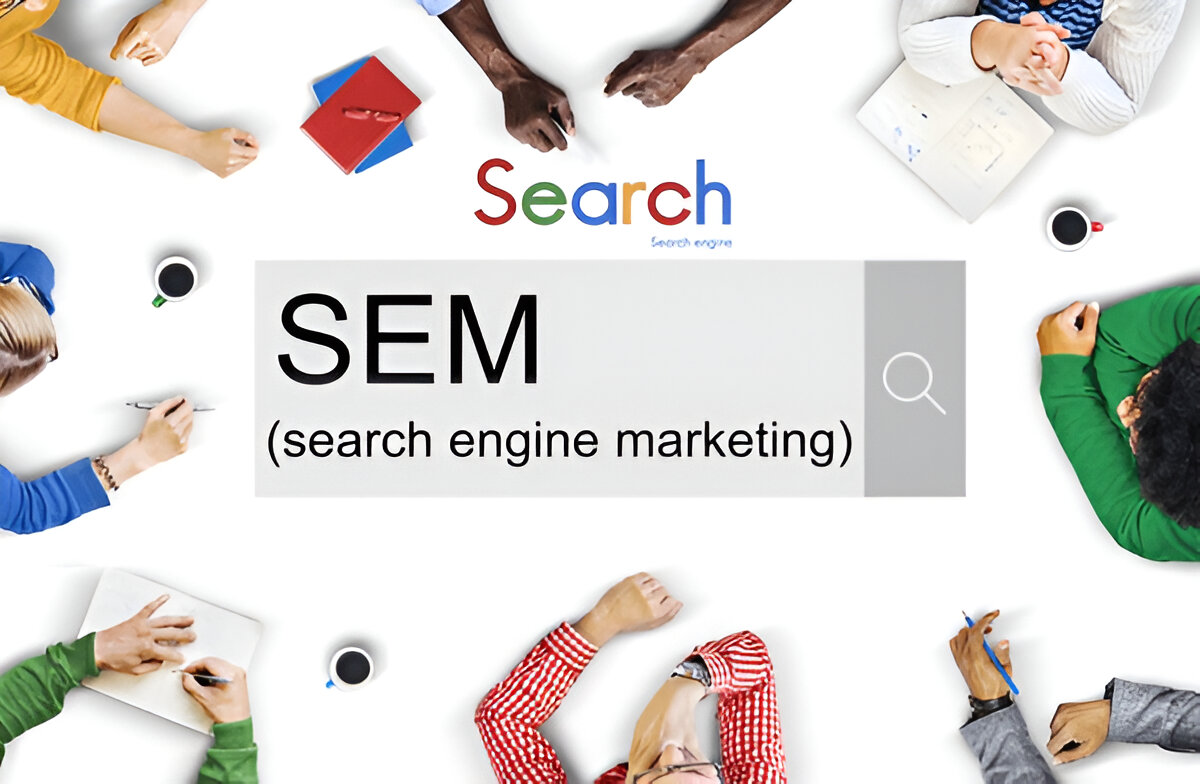
The truth is, for service-based businesses, every lead counts. Whether you’re a local plumber, a digital marketing agency, or a law firm, getting quality leads is crucial to growing and sustaining your business. But how do you get those leads without blowing your budget?
This is where Search Engine Marketing (SEM) comes in. It’s an incredibly powerful tool that can help you target the right audience, optimize your ad spend, and drive valuable leads. But success in SEM is all about strategy. This post will walk you through how to use SEM effectively for service-based businesses so you can attract clients without wasting money.
What Is SEM and Why Does It Matter for Service-Based Businesses?
Search Engine Marketing (SEM) is a digital marketing strategy that focuses on increasing the visibility of a website on search engine results pages (SERPs) through paid advertising. Unlike SEO, which focuses on earning organic traffic over time, SEM is about getting immediate visibility through paid ads like Google Ads or Bing Ads.

For service-based businesses, SEM is especially important because it allows you to directly target potential clients who are searching for services like yours. Unlike traditional advertising, like billboards or TV ads, SEM ensures that your message reaches people who are already interested in what you offer.
Why SEM Works for Service-Based Businesses:
- Highly Targeted Ads: Reach customers in specific locations or with specific interests.
- Pay Only for Clicks: Only pay when someone clicks on your ad, making it cost-efficient.
- Instant Visibility: Unlike SEO, SEM puts your business at the top of the page immediately.
Common Challenges in SEM for Service-Based Businesses
While SEM is highly effective, it’s not without its challenges. Here are some common pitfalls service-based businesses face when running SEM campaigns:
- Wasted Budget on Broad Keywords
Investing in keywords that are too broad (e.g., “plumbing”) can lead to wasted clicks from users who aren’t genuinely looking for your services.
- Poor Geographic Targeting
A service-based business serves specific locations, so showing ads to users outside those areas is inefficient and a waste of money.
- Generic Ad Copy
Without engaging, specific ad copy, your ad won’t stand out, regardless of where it appears on the SERPs.
- Ignoring Mobile Optimization
Most local searches are done on mobile. If your SEM strategy doesn’t account for mobile users, you’re leaving leads on the table.
How to Make SEM Work for Your Service-Based Business
Here’s how you can run SEM campaigns that actually get you qualified leads without burning through your budget:
1. Define Your Goals
Before diving in, identify what you want to achieve with SEM. Are you trying to generate leads, drive calls, or get foot traffic to a location? Defining your goals will guide your keyword targeting, ad format selection, and overall strategy.
Example:
- If you want phone leads, choose call-only ads in Google Ads.
2. Focus on Local Search Ads

Service-based businesses often operate in specific areas, which makes local search ads a must. Use Google’s location targeting tools to ensure your ads are only shown to people in your service area.
Tips for Local SEM:
- Target specific ZIP codes or mile radii around your service area.
- Include location-based keywords, such as “roof repair in Boston” or “wedding planner NYC.”
3. Choose the Right Keywords
Keyword research is the foundation of SEM. For service-based businesses, long-tail and intent-specific keywords tend to deliver the best results. These keywords often signal that a user is ready to take action.
Examples of Keywords:
- Broad Keyword (Avoid): “Cleaning services”
- Better Keyword (Intent-Driven): “Same-day house cleaning near me”
Use tools like Google Keyword Planner, SEMrush, or Ubersuggest to find keywords that have high intent but low competition.
4. Write Highly Specific Ad Copy
The more specific and action-oriented your ad, the better it will perform. Instead of copying generic phrases, write ads that resonate with your customers’ pain points and offer clear solutions.
Example Ad Copy:
- Generic: “Affordable Landscaping Services”
- High-Converting: “Get Your Lawn Summer-Ready Today! Book Local Landscaping Pros in Seattle Now.”
Always include:
- A strong call-to-action (e.g., “Book Now,” “Call Today”).
- Unique selling points (e.g., “Free quotes,” “24/7 availability”).
- Ad extensions, such as phone numbers or site links, to add credibility.
5. Optimize for Mobile Users
According to studies, 78% of local searches on mobile result in offline purchases. Mobile optimization is essential for service-based businesses.
Mobile-Friendly SEM Tactics:
- Use call-only ads where users can directly click to call your business.
- Make your landing pages mobile-responsive and load fast.
- Ensure phone numbers are clickable for easy access.
6. Track and Refine Your Campaigns
SEM is not a set-it-and-forget-it strategy. Use tools like Google Ads and Google Analytics to track the performance of your ads. Monitor important metrics like click-through rates (CTR), cost-per-click (CPC), and conversion rates (CVR).
If you’re familiar with Google Ads for Ecommerce, many of the optimization techniques—like A/B testing, bid adjustments, and audience targeting—also apply to service-based SEM campaigns. The key is continuous improvement based on performance data.
Things to Focus On:
- Pause keywords that aren’t converting.
- A/B test your ad copy to see what resonates with your audience.
- Increase bids on high-performing keywords during peak business hours.
Measuring the ROI of Your SEM Campaigns
It’s important to measure the return on investment (ROI) of your campaigns to understand if you’re spending wisely. Here are some easy formulas and tips:
Basic ROI Formula:
(Revenue from Ads – Cost of Ads) ÷ Cost of Ads = ROI
Examples:
- If you spend $500 on ads and generate $2000 in sales from those ads, your ROI is 300%.
Bring Leads To Your Doorstep: Start SEM Today
SEM isn’t “just advertising” for service-based businesses. When done right, it’s a strategic way to reach the right customers at the right time without wasting money. By focusing on local search, intent-driven keywords, and mobile-first tactics, you can turn your SEM campaigns into lead-generating machines.
But success in SEM requires time and expertise. Don’t go it alone. Take advantage of tools and resources that make the process easier. Whether you’re new to digital marketing or simply want to optimize your approach, now is the time to start leveraging SEM to grow your business.
Need help getting started with SEM? Contact us today for a free consultation, and we’ll help you craft a campaign tailored to your business goals.
Learn about: What Is the Future of SEM?


Leave a Reply